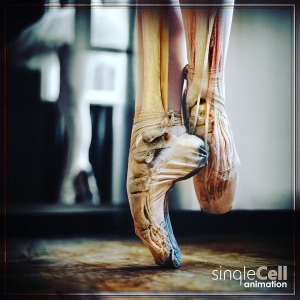With icy sidewalks and streets, falls during the winter can become more prominent. One injury that can occur is ankle sprains. Have you ever sprained your ankle before? Wondering if you should seek physiotherapy? Lets look at a case history of one example of an ankle sprain and what physiotherapy may involve…
Ankle Sprain: Case Study
A 35 year old woman attends the clinic after she was walking her dogs outdoors when they lunged suddenly, causing her to slip on some ice. She fell, rolling her right ankle to the side and was able to get back up and weight bear through her injured ankle, although limping back home. Her ankle was pretty sore with some noticeable swelling so she went to see her family physician the following day. X-rays were taken of the ankle and she was advised she did not have a fracture, but rather sprained her ankle. She was recommended to rest the ankle for the next 3 days and to limit her weight bearing as tolerated using a lace up brace. She was also prescribed anti-inflammatories and referred to physiotherapy.

Dance Ankles and Feet
For the assessment she was weight bearing with a lace up ankle brace. The ankle was noted as still sore but improving.
Some mild swelling over the lateral ankle and some tenderness to touch over the ankle ligaments were noted. With in-clinic testing it was determined she was dealing with a moderate ankle sprain. She was prescribed some basic neuroproprioceptive and gentle strengthening exercises. These early phase exercises set the base foundation for return to regular activity and sports and she was eager to get back to her regular routine with her dogs.
The client was seen for 6 further follow ups over the next 3 months. During this time she was provided with some manual therapy techniques to the ankle. She was also given a progressive home exercise program which included progressive strengthening, balance and proprioceptive training. The client noted full resolution of symptoms at the conclusion of her treatment and return to her activities which included walking her dogs and her dance class.
Often people find that their ankle will feel “good enough” part way through rehabilitation but ensuring that all systems are truly “go” will help prevent a recurring injury from incomplete rehab programming.
What is the current evidence for acute lateral ankle sprains and the role of physical therapy?
If required a short period of immobilization may be used, however exercise and a functional support (either bracing or taping) is recommended over immobilization. Clinical practice guidelines support the inclusion of an active exercise rehab program following an acute lateral ankle sprain as soon as possible to help prevent recurrent lateral ankle sprains. 1
It is commonly misunderstood that someone must wait a certain period of time before attending physiotherapy, however, keep in mind that physiotherapists can assess injuries right from the moment of impact; just like when an athlete becomes injured. Coming for an appointment early in healing can give you the right tools to start with immediately. Alternatively, the body is capable of healing and change even after extended periods of time so it is also never too late to start.
If you have unfortunately sustained an ankle injury, we at Warman Physiotherapy and Wellness have trained physiotherapists who can offer a progressive rehabilitation program to help you on the road to recovery and return you to your activities/sport!
References:
- Diagnosis, treatment and prevention of ankle sprains: update of an evidence-based clinical guideline. BJSM. Volume 52, Issue 15. August 2018. Gwendolyn Vuurberg, et. al.

